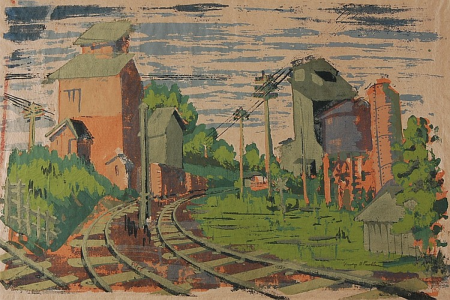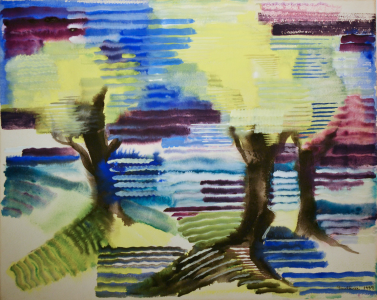
Biography
Kady Faulkner was born in Syracuse, New York. Having contracted polio as a child, she was not expected to live to adulthood. But she did, and she graduated from Syracuse University in 1925. She attended the Art Students League and the Grand Central School of Art in New York, supporting herself with teaching jobs at various public schools. In 1928 she moved to Lincoln, Nebraska, where she taught at the University of Nebraska and completed work for a Master of Fine Arts degree from Syracuse University. In the summer of 1933, she returned to New York to study with Hans Hoffman, newly arrived from Europe. She also studied with Boardman Robinson and Henry Varnum Poor.Faulkner remained on the faculty of the University of Nebraska for 20 years, where she was a very serious, accessible and popular teacher. Her popularity extended across the state, through lectures that she gave in various towns. But this popularity was not enough to overcome the extreme conservatism of Nebraska of that era. Her 1939 mural in the town of Valentine was met with derision and hostility - for what the locals perceived as inaccuracies. Actually, her painting had a very modest bit of abstraction in the composition: for example, she depicted Valentine as literally the "end of the line," with the railroad tracks stopping abruptly at the Valentine station. Eventually she even had trouble at the University of Nebraska, when she clashed with a new administration and resigned in protest, very nearly taking the entire Department of Art with her. At this point she moved to Kenosha, Wisconsin, where her grandparents had founded the Simmons Mattress Company. In Kenosha she resumed her teaching career at Kemper Hall, an Episcopal girls school. She remained at Kemper Hall for another 20 years, retiring in 1972. Following her death, the Anderson Art Center was established, fulfilling Faulkner's long-held goal of creating an art school in Kenosha.


Critical Analysis
Faulkner regarded herself as an educator first and an artist second. Nonetheless, she was very productive as an artist. Her work shows a definite flair, and bears the imprint of her lifelong enthusiasm. Her work in the 1930s was characteristic of the American Scene. During that time she exhibited in more than 50 shows. Freed of the constraints of public commissions, she brought a bright note of abstraction into her later paintings. As an educator, she was at once very demanding of her students and solicitous of their welfare. During the 1930s she set up Soldier Art Classes for returning veterans and helped her students show their work at the Lincoln Artists' Guild.Murals
- Valentine, Nebraska - Cherry County Office Building: End of the Line
References
- Sharon L. Kennedy, Early Nebraska Women Artists, 1880-1950, Resource Library January 16 (2009).
- Faulkner Mosaic (Kenosha Historical Preservation Commission).
- Kady B. Faulkner Rites were held in Wisconsin, Lincoln Journal June 20 (1977).
- Kady Burnap Faulkner (askART).
- Kady Faulkner (Wikipedia).
- Kady Faulkner watercolor (Collectors Weekly).
- Katherine (Kady) Burnap Faulkner (Museum of Nebraska Art).